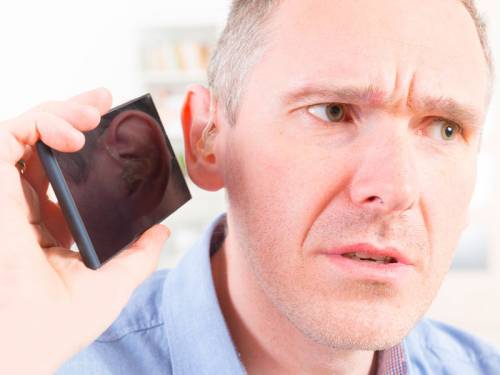How to welcome all into the 21st century
By Sarah VanderZee McKenney | Presbyterians Today
 Here are some interesting statistics that you might not know: In 2018, a Centers for Disease Control report revealed that one in four U.S. adults — 61 million — had a disability. According to the Collaborative on Faith and Disability, 84% of people with disabilities claim a faith tradition that is important to them. Yet, only 10% of faith communities do any congregation-wide disability awareness. This was before the pandemic. Now in a time of digital worship, Bible studies and meetings, being part of a faith community can be more challenging for those living with a disability.
Here are some interesting statistics that you might not know: In 2018, a Centers for Disease Control report revealed that one in four U.S. adults — 61 million — had a disability. According to the Collaborative on Faith and Disability, 84% of people with disabilities claim a faith tradition that is important to them. Yet, only 10% of faith communities do any congregation-wide disability awareness. This was before the pandemic. Now in a time of digital worship, Bible studies and meetings, being part of a faith community can be more challenging for those living with a disability.
While in theory, technology provides a more accessible way to tune in to worship for some with disabilities, the theory falls short in practice for various reasons. Many people with disabilities are working hard to pay their rent and medical bills, and don’t necessarily have enough money left over for the tools they need to worship digitally, such as a computer, tablet or cellphone. Some who do can’t afford internet service.
Then there are the shortcomings of the actual technology itself. People who are blind, for example, rely on good audio and links and websites that are accessible with a screen reader.
Deb Trevino, a Presbyterians for Disability Concerns leadership member, who experiences the world as a totally blind woman, says, “Church is about the fellowship and care we give one another, and I can’t find that in a virtual church service. Apart from radio productions of sermons, I haven’t found anything with good audio. I mourn the loss of services in the church.”
Like Trevino, Laura and Randy Windsor, members of Hope Community Presbyterian Church of Lakeland, Florida, miss the personal interaction with their church family. On Wednesday evenings, they join a Zoom Bible study. “Online is OK, but we can’t talk to anyone,” they said. Laura and Randy have cerebral palsy. Speech can be challenging for others to understand (especially virtually), and typing in the Zoom chat box is not an option for them. The Windsors, though, found a solution to be part of the study’s sharing of prayer concerns. Their caregiver for the night will send a text message to Laura and Randy’s small group leader, who then shares the couple’s prayer concerns with the group.
What Mikaela Coppedge from First Presbyterian Church in Bloomington, Indiana, misses about not being able to attend church physically is the opportunity she had to share her gifts by assisting with the church’s coffee cart.
“We would sell fair-trade hot chocolate, coffee, tea and chocolate. It made me feel like I’m part of the team, because I got to help people and then I got to see their smiling faces. I felt good knowing I was helping out the farmers,” said Coppedge, who lives in a group home that has had to follow strict policies to protect the health and safety of Coppedge and her housemates. Her congregation, though, has found ways to include her on Sunday mornings by inviting her to be a liturgist and integrating a recording of her reading Scripture into the digital worship service. Coppedge has taken it upon herself to minister to others by calling church members to “check in on people to see how they are doing.”
The need to connect is a spiritual need she has, Coppedge said, and one that she knows others have as well. All churches have a “Mikaela Coppedge” in them — people with gifts who are not given the space to use them, especially those with disabilities. How can your church make worship more accessible and more inclusive? How can people with disabilities in your congregation, who may often be overlooked, share their gifts in the age of digital ministry?
Sarah VanderZee McKenney is a minister in the PC(USA) and serves as the spiritual support coordinator for Stone Belt Arc in Bloomington, Indiana. McKenney wrote this article in cooperation with Presbyterians for Disability Concerns, of which she is a member.
Helpful Tip
The first step in creating a more inclusive church community, especially with the advent and growing use of digital worship, is to ask those in your congregation what works and what doesn’t, and what changes are needed to help them participate. For more helpful resources, visit presbyterianmission.org/ministries/phewa/pdc or follow the group on Facebook at PresbyteriansForDisabilityConcerns.
Support Presbyterian Today’s publishing ministry. Click to give
![]() You may freely reuse and distribute this article in its entirety for non-commercial purposes in any medium. Please include author attribution, photography credits, and a link to the original article. This work is licensed under a Creative Commons Attribution-NonCommercial-NoDeratives 4.0 International License.
You may freely reuse and distribute this article in its entirety for non-commercial purposes in any medium. Please include author attribution, photography credits, and a link to the original article. This work is licensed under a Creative Commons Attribution-NonCommercial-NoDeratives 4.0 International License.